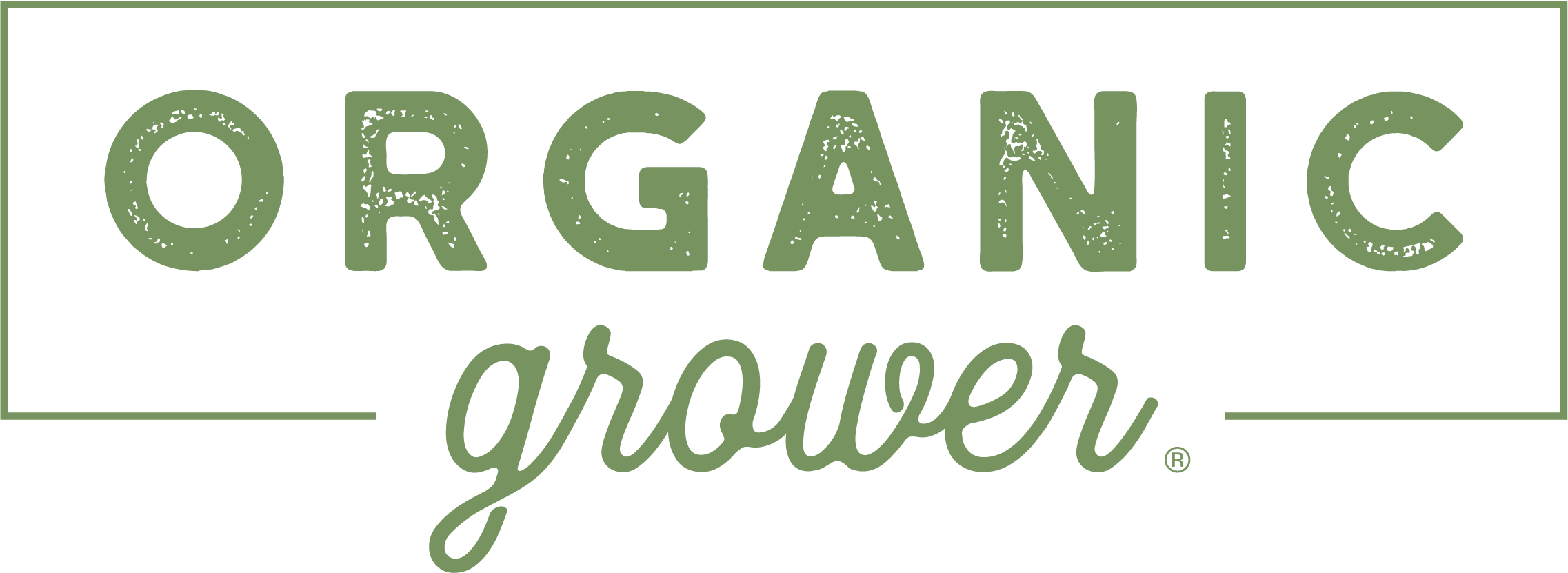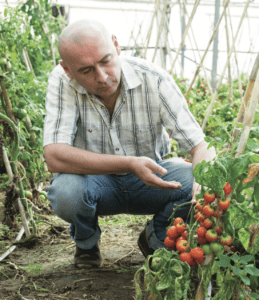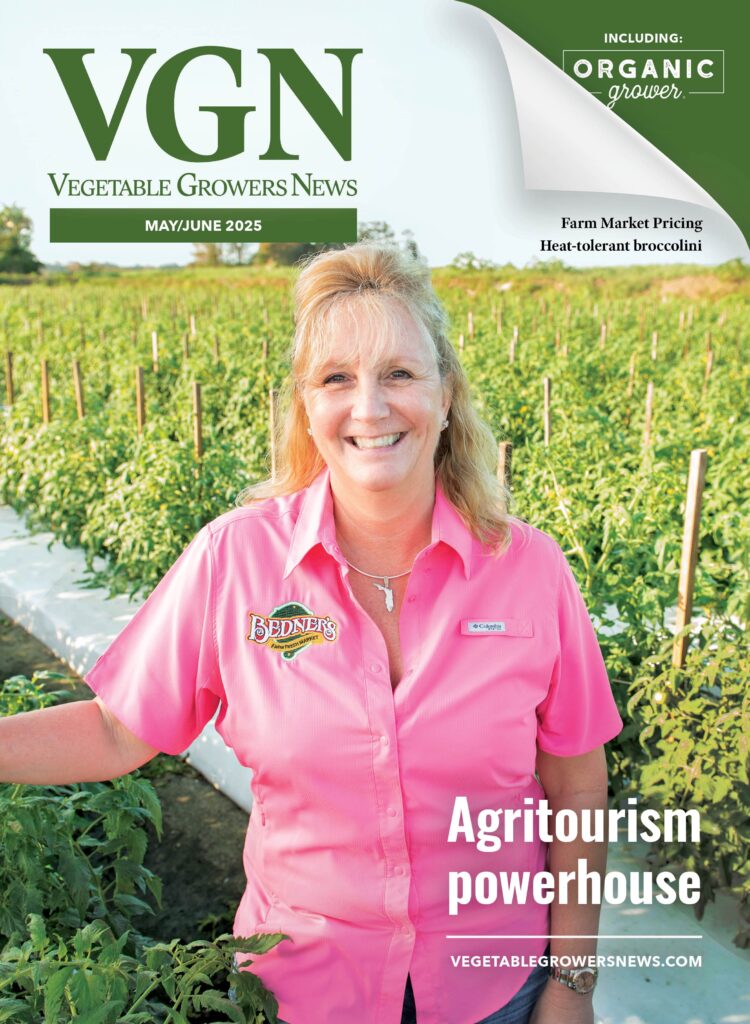
Apr 14, 2022Many causes make greenhouse tomatoes take unfortunate turn
The tomatoes look great in the greenhouse. The fertility’s right, diseases and insect pests are under control … but then things don’t look so good. In fact, the tomatoes really aren’t looking that good at all. What could it be?
It could be ethylene damage from unadjusted heaters, too much humidity, too much or poor quality irrigation water, or temperatures are too low or too high. The list goes on and on.
“When you’re growing tomatoes, you’ve got to be a worrier,” said Rick Snyder, Mississippi State University professor and vegetable specialist. Snyder talked about greenhouse tomatoes at the 2021 Great Lakes Fruit, Vegetable & Farm Market EXPO in Grand Rapids, Michigan.
The minimum temperature for tomatoes is 64 ̊ F, and supplemental heat must be available.
“A lot of problems start when temperatures fall below 64 degrees,” Snyder said.
The maximum temperature for tomatoes is 90 ̊ F and fans, vents and horizontal air flow must be available to keep temperatures below that threshold. Evaporative cooling systems like the traditional pad and fan system or fogging are options, and shade materials can help on sunny days.
Don’t overcrowd the tomato plants.
“Overcrowding will not increase your yield,” Snyder said. “You’re better off with a good planting strategy.”
Some general rules of thumb are one plant per five square feet. It’s three or four plants per two cubic feet in a lay-flat bag, and two plants per five or 7.5-gallon upright bag or per five-gallon nursery bucket.
Test your irrigation water. The quality of water sources can vary and change over time.
“Don’t assume it’s good because it’s community water,” Snyder said. “Take a water sample and test it.”
Use a clean water bottle for the sample and not a container that could be contaminated.
Tissue test regularly and take the samples correctly. Get 10-12 leaves randomly throughout the greenhouse and not more than one leaf from a plant.
“Don’t take sickly leaves,” Snyder said. “Don’t take leaves from the
bottom of the plant. You want leaves of the same physiological age.”
Maintain heaters, fans, vents, emitters, injectors and pumps. Have them ready before you need them.
“Walk through the greenhouse every day to see if you have any wilted plants,” Snyder said. “If you do, you may have a plugged emitter or a broken stem.”
Vent heaters to the outside and don’t use space heaters that exhaust into the greenhouse. Ethylene or carbon monoxide from heater exhaust most frequently shows up on the tomatoes as leaf epinasty, drooping and curling. The plants appear to be wilted but they’re not. The flowers will form, abort, dry out and fall off.
“There is no such thing as 100% energy efficient heaters,” Snyder said. “You won’t get fruit set. You’ll drop flowers and reduce yield.”
The most problems with ethylene or carbon monoxide are in new greenhouses where the heaters haven’t been properly adjusted or old heaters are starting to get pin holes in the exhausts and leak exhaust gasses.
The best humidity for tomatoes in a greenhouse is around 70%, and that is difficult to maintain.
“You can’t really control humidity – especially in a hot, humid climate like Mississippi,” Snyder said.
Plant transpiration is one source of high humidity. Plants naturally transpire to keep themselves healthy and cool. High humidity and low air movement can inhibit transpiration and plants can get heat stressed. Evaporation from puddles or wet leaves can be another source of high humidity, and condensation from high humidity puts water on the fruit.
“Most fungi need a film of water to grow,” Snyder said. Moisture on the walls blocks sunlight and reduces photosynthesis.
Poor fruit set, poor fruit quality, lower yield and more disease can all be the results of humidity that is too high, and it can also cause poor pollination.
Tomatoes have perfect flowers – both the male stamens and the female pistils are in the same flower.
“You want pollen to be individual particles,” Snyder said. “You want the particles to set on individual flowers.”
If the relative humidity gets too high, the pollen can get clumpy. A humidity level that’s too low will also hurt pollination because it will let the stigmas in the pistils dry out so pollen grains will not stick to them.
Exhaust fans used early morning every day is a good technique. High humidity is worse in the early mornings, especially during cooler months when the exhaust fans aren’t used as much.
“Plan on five minutes of exhaust,” Snyder said. “Ten minutes if you need it.”
This drives moisture out quickly. An early morning exhaust will cause the heater to turn on, which raises the temperature – which lowers the humidity – and further dries the air.
Horizontal air fans can stir the air and help dry leaf and flower surfaces.
“They make circles of air moving through the greenhouse,” Snyder said.
Growing tomatoes in a greenhouse can get complicated. For example, blossom drop, when the flowers fall off and reduce yield, can be caused by temperature – day temperatures higher than 90 ̊ F or night temperatures higher than 75 ̊ F – humidity that’s too high, the presence of ethylene, too much or too little nitrogen, and basically, any stress on the plant.
“You need to educate yourself,” Snyder said, “and there are people and resources out there who can help you.”
Helpful individuals could be industry experts, other growers and Extension or university staff.
Resources on greenhouse tomatoes from Mississippi State University can be found at: http://extension.msstate. edu/crops/commercial-horticulture/ greenhouse-tomatoes.

















